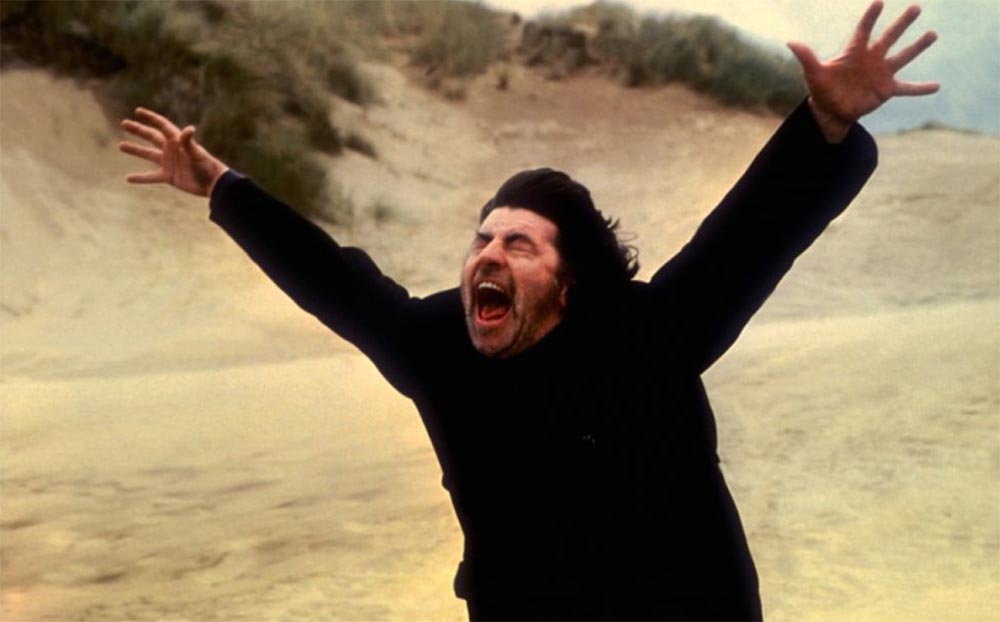In the 1970s and ‘80s, UK pop culture had something of a twisted love affair with the Australian Outback and its Aboriginal inhabitants. The British filmmaker Nicolas Roeg’s Walkabout (1971) presented a vision of white English innocence protected by the prelapsarian noblesse of a young Aboriginal man (David Gulpilil, a Yolngu actor who went on to have a prolific career in Australian cinema). Eleven years later, the British musician Kate Bush’s album The Dreaming romanticized the titular concept—an Aboriginal mythological worldview—while also drawing in anticolonial critique. Jerzy Skolimowsky’s The Shout (1978), though set and shot entirely in England’s West Country, also revolves around Aboriginal mythology—or at least one obsessive Englishman’s interpretation of it.
The film, which Roeg was initially slated to direct, opens with the quintessentially English framing device of a cricket game. This one is set on the pastoral grounds of a mental asylum. Charles Crossley (Alan Bates), a patient, tells his story to Robert (Tim Curry), who’s been invited to keep score. In flashback, Charles ingratiates himself into the quiet life of Anthony (John Hurt), an experimental musician and church organist, and his wife Rachel (Susannah York). Over a lunch to which he’s invited himself, Charles tells the young couple that he spent eighteen years in the Outback, where he married an Aboriginal woman and had children who—in accordance with an ostensible indigenous belief—he killed so that he would not leave them behind when he left the country. Charles then tells Anthony about the “terror shout”: a bloodcurdling screech he learned to perform from an Aboriginal shaman, which he says will kill anyone in its wake. When Charles calls Anthony into the couple’s guest room to inform him of this practice, he is sitting up in bed nude, a discomfitingly erotic gesture of dominance. Bates’s broad, muscular body contrasts starkly with Hurt’s wiry frame, imbuing the former man with a virile machismo that presages the mystical cuckoldry he will soon impose on the household.
Sound plays a central role in The Shout, often laying a vague and implacable foreboding under the action. The mournful cries of peacocks haunt the scenes on the asylum’s grounds. And in his recording studio, Anthony experiments with the excruciating noise of a violin bow on a nail hammered through a sardine can. The terror shout, naturally, wreaks more material havoc, but the intangibility of the unsettling soundscape suggests the distant haunting of a pastoral Merrie England by way of colonialism, as well as the magic it sought to snuff out. These practices, as Charles’s sinister presence suggests, come back in twisted form to visit horror upon Albion.
The Shout screens tonight, August 28, at Alamo Drafthouse Downtown Brooklyn as part of the series “Weird Wednesdays.”



